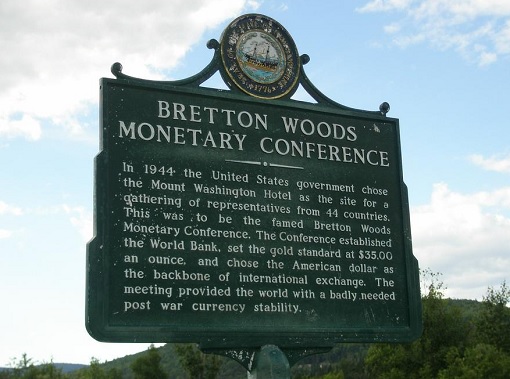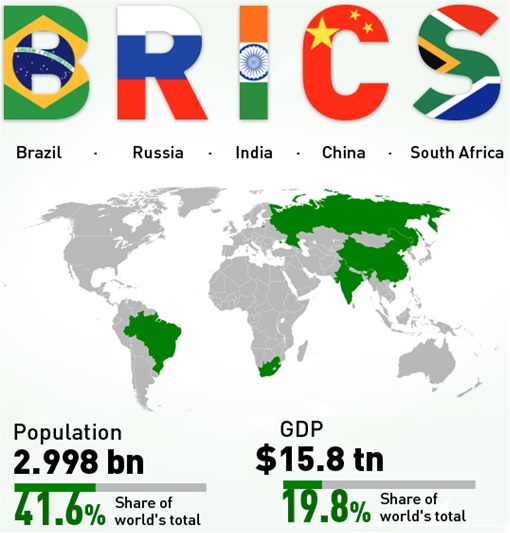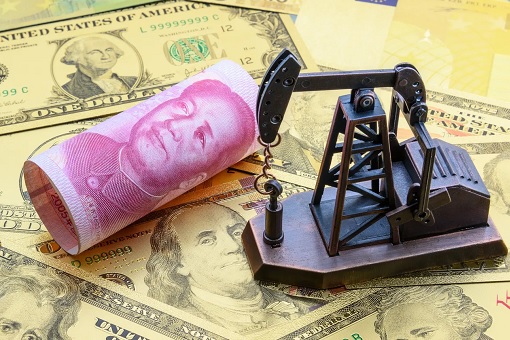For the last 100 years since the U.S. dollar replaced the British pound sterling as an international reserve currency, the United States has become the world superpower after the First World War (1914-1918). Coincidentally, the dollar as we know it today was actually first printed in 1914 after the Federal Reserve Bank was created under the Federal Reserve Act.
It was in response to the unreliability and instability of the previous currency system based on banknotes issued by individual banks. That’s when the Fed started issuing US$10 denominations featuring Andrew Jackson’s portrait. When World War I broke out in 1914, many countries suspended their use of the gold standard to pay their military expenses with paper money, which devalued their currencies.
The U.S. was flushed with gold because as the main supplier of weapons and other goods, it was paid in gold. But after two world wars, Europe was almost bankrupt and could not go back to the gold standard. So, delegates from 44 Allied countries met in Bretton Wood, New Hampshire, in July 1944 to come up with a system to manage foreign exchange that would not hurt any country.

They decided that the world’s currencies would no longer be linked to gold but could be pegged to the U.S. dollar, which in turn was backed by gold reserves. Called the “Bretton Woods System”, it was decided that all the nations will adjust their currencies to the U.S. dollar, which in turned was fixed to gold at US$35 an ounce. That’s when the dollar was officially crowned the world’s reserve currency.
Everything went smoothly till the early 1970s, when the U.S. lost the Vietnam War. The irresponsible increase domestic spending on President Lyndon Johnson’s Great Society programs and the skyrocketing military spending caused by the Vietnam War forced U.S. President Richard Nixon to suspend the dollar’s convertibility into gold in August 1971.
Nixon had to dump the fixed exchange rate system because the U.S. Treasury discovered in 1970 that if everyone who held dollars came asking for an ounce of gold, the US would not only be depleted of its gold but would also have to borrow a lot of it to keep its promise. The “Bretton Woods System” collapsed because the U.S. cannot pay, and Nixon simply told the world to go fly a kite.

Essentially, the U.S. was as bankrupt as Europe because of wars. While the dollar remains the world’s reserve currency today, it is not being backed by gold but based on the “trust and confidence” that the greenback will not collapse due to the size and strength of the U.S. economy. To make sure it can pay debts, the U.S. simply prints dollar whenever the needs arise.
The scheme works like a charm because the world has no other option. However, it also makes the U.S. not only arrogant, but has been abusing the dollar dominance to create havocs worldwide – militarily, politically and economically. Now, with the emergence of China as the new global economic powerhouse, the world is presented with an option – challenge the U.S. dominance.
Not every American agrees with the behaviour of the United States. Former Goldman Sachs chief economist Jim O’Neill, for example, is encouraging five leading emerging economies of BRICS bloc – comprises Brazil, Russia, India, China and South Africa – to expand and challenge the dominance of the U.S. dollar. He has his own reason to promote de-dollarization.

Writing in a paper published in the Global Policy journal, O’Neill, a former chairman of Goldman Sachs Asset Management, said – “The U.S. dollar plays a far too dominant role in global finance. Whenever the Federal Reserve Board has embarked on periods of monetary tightening, or the opposite, loosening, the consequences on the value of the dollar and the knock-on effects have been dramatic.”
O’Neill, a former UK Treasury minister and a British economist best known for coining the BRICS acronym, said the dollar’s dominance destabilizes other nations’ monetary policies whenever the U.S. raises or cut interest rates. This can be seen when the Fed aggressively hikes its key policy rate from around zero to a range of 4.75%-5% to tame inflation, and in the process affect the world.
Hence, he sees the dollar’s dominance as a burden to the nations with dollar-denominated debt since their monetary policies are destabilized when exchange rate fluctuations. O’Neill says BRICS should be expanded to create a fairer, multi-currency global system by including emerging nations such as Mexico, Turkey, Egypt, Indonesia, Bangladesh, Vietnam, Pakistan and the Philippines.

China is already in full steam to do just that, leveraging on BRICS and other trading partners to dump the dollar. The move by the U.S. and Western nations in imposing economic and financial sanctions against Russia in response to its invasion of Ukraine, which saw big Russian banks banned from SWIFT followed by freezing – even seizing – of Russia’s US$630 billion of foreign reserves, has backfired.
It was a wake-up call to other nations about the vulnerability of keeping their foreign reserves in the dollar. The U.S. government will “weaponize” not only sanctions to punish any government that does not subscribe to its ideology or disobeys its order, but can unfairly seize their hard-earned foreign reserves with a snap of a finger. Thanks to China, they can now diversify.
As China steps up using its Yuan or Renminbi as a trade settling mechanism, Russian president Vladimir Putin has become the biggest cheerleader of the Chinese currency, revealing that about two-thirds of the trade settlements between Russia and China were with Yuan and Ruble. The Yuan-dominated trade flows between both countries exploded last year.

China’s trade with Russia hit a record 1.28 trillion Yuan (US$190 billion) in 2022 as Moscow’s imports from the European Union fell on sanctions. Essentially, Russia has become the top foreign market for the Chinese currency. In fact, Putin publicly announced that his country prefers Yuan in trades even between Russia and other countries in Asia, Africa and Latin America.
The Yuan’s market share in Russia jumped to 48% in November 2022 from less than 1% in January the same year. Heck, the country briefly became the world’s third largest offshore trading hub for the Chinese currency in July 2022 – behind Hong Kong and United Kingdom. The Russian sovereign wealth fund has actually doubled the share of Yuan reserves to 60%.
On Thursday (March 30), Brazil announced a deal with China to ditch the U.S. dollar when paying each other for goods. The deal will enable China, the top rival to American economic hegemony, and Brazil, the biggest economy in Latin America, to conduct their massive trade and financial transactions directly – exchanging Yuan for Real and vice versa instead of going through the greenback.

Last year, Sino-Brazil bilateral trade increased 4.9% to US$171.49 billion. China overtook the U.S. as Brazil’s top trading partner in 2009. Local currency clearing will benefit both countries, as it effectively reduces the interest rate costs from use of the dollar as an intermediate currency. It eliminates the demand for the U.S. dollar, hence weakening the currency.
But de-dollarization was not confined to merely BRICS members. In another astonishing move, the Shanghai Petroleum and Natural Gas Exchange announced on March 30 that it completed its first Yuan-settled trade for liquid natural gas (LNG) between China’s National Offshore Oil Corporation and France’s TotalEnergies. Yes, even France has begun using the Chinese currency.
The first-ever deal in the Renminbi Yuan currency between the Chinese and French energy companies involved 65,000 tons of LNG imported from the United Arab Emirates (UAE). The trade marks a major step in Beijing’s attempts to challenge the “petrodollar” with the alternative “petroyuan”, something which China introduced in 2018 to give the U.S. dollar a bloody nose.

The historic deal, which was unthinkable in the past as virtually all energy from the Persian Gulf was sold in dollars, came after Xi Jinping made a landmark visit to Saudi Arabia last December when the Chinese president suggested that China and the Arab Gulf nations should use the Shanghai Petroleum and National Gas Exchange as a platform for carrying out Yuan settlement of oil and gas trades.
As Washington busy with domestic affairs, including the prospect of arresting and jailing former president Donald Trump as well as sending more taxpayers money and weapons to Ukraine, President Xi Jinping had quietly brokered the Saudi-Iran deal. The world was stunned after arch-rivals Saudi Arabia and Iran announced they were restoring diplomatic relations.
However, Beijing was not playing its role as a mediator just to win praise. Challenging the American Empire hegemony, the peace agreement shows the diminishing influence and credibility of the U.S. in the Middle East as Saudi and Iran enter China’s orbit. The U.S. could only watch – speechless – as China claims his place as a great power in a multipolar world order, at least in the Middle East.

China was taking advantage of the growing distrust between Saudi and the U.S. to give the de-dollarization a boost, which can only happen if the kingdom feels comfortable enough to pivot to Russia and China. The latest peace deal, besides ensuring energy security for the Chinese, will give Saudi (and its allies in the Gulf) a compelling reason to trade oil with China in Yuan instead of the dollar.
Last October, Riyadh has expressed its desire to join BRICS. The kingdom understood very well that their US$430 billion foreign reserves were equally vulnerable and could vanish into thin air one day if the U.S. suddenly imposes sanctions on them and pulls another “daylight robbery” similar to that of Russia. This creates the urgent need to diversify from the dollar.
Worse, U.S. lawmakers have urged President Joe Biden to teach Saudi a lesson by revoking the sovereign immunity that protects OPEC members and allied oil-producing nations from antitrust lawsuits. On May 5, 2022, the U.S. passed the NOPEC bill – No Oil Producing and Exporting Cartels – a new tool specially designed to tackle high fuel prices associated with OPEC+.

One of Saudi’s biggest worries is the price cap of US$60 per barrel which the West has slapped on Russia. Saudi Energy Minister Abdulaziz bin Salman Al Saud immediately declared that the kingdom will not sell oil to any country that imposes a price cap on its supplies. But it shows how vulnerable Saudi is compared to Russia, which can flex its military muscle to spook the prices of oil and gas.
During the same week France’s TotalEnergies paid in Yuan for LNG from UAE and Brazil’s decision to dump the dollar, China and Saudi signed some major oil deals. Saudi energy giant Aramco has acquired a 10% stake in Shenzhen-listed Rongsheng Petrochemical in a deal valued at US$3.6 billion that would “significantly” expand its refining operations in China.
Crucially, Aramco will supply 480,000 barrels per day of Arabian crude oil to Rongsheng affiliate Zhejiang Petroleum and Chemical Co under a 20-year sales agreement. The deal comes a day after Aramco agreed to begin construction of refining and petrochemical complex at Liaoning in China costing US$12 billion – deepening ties between both countries.

So, it’s not one but two refineries that would see Aramco supplying a combined 690,000 barrels a day of crude oil, fully committing itself as China’s top provider of energy. And guess what currency the Chinese will use to pay the Saudis. If this does not convince you that Saudi is moving away from the West, the kingdom has also decided to join SCO (Shanghai Cooperation Organization) as a dialogue partner.
If BRICS was formed to compete with G7, China-led SCO security bloc is seen as a rival to NATO. However, unlike the North Atlantic Treaty Organization, which is purely a military alliance, the SCO is a “Political, Economic, and Security Alliance” that was formed in 2001 to counter western influence. SCO members include China, Russia, India, Pakistan and four central Asian countries.
Clearly, Saudi and other non-Western countries are embracing China as an emerging power player towards a multipolar world order. More importantly, the Chinese Yuan can challenge the U.S. dollar largely because China is the largest trading partner to more than 120 countries in the world. This means the days of America’s trade dominance have passed.

As of August 2022, 149 countries and 32 international organizations have signed Belt and Road Initiative (BRI) cooperation agreements with China. In 2021 alone, China’s total trade with the BRI countries was a jaw-dropping 11.6 trillion Yuan (US$1.7 trillion). It’s not rocket science why King Salman and Saudi Crown Prince Mohammed bin Salman are shifting to the East.
Using Yuan is not the only way to undermine the U.S. dollar. Brazil and Argentina have discussed the creation of a common currency for the two largest economies in South America. The UAE and India are in talks to use Indian Rupees to trade non-oil commodities in a shift away from the dollar. Trade between India and Malaysia can now be settled in the Indian currency too. They are all de-dollarization.
Make no mistake – the dollar will not become worthless overnight. After all, China still has tonnes of U.S. dollar in its reserves. However, it might have to share the throne with the Chinese Yuan as world’s reserve currencies. As condemned by Elon Musk, the U.S. dollar is in deep shit because the U.S. policy has been “too heavy-handed, making countries want to ditch the dollar.”

Other Articles That May Interest You …
- Why China-brokered Saudi-Iran Peace Deal Is A Game Changer – And The U.S. Was Incredibly Surprised & Upset
- De-Dollarization Begins – China Stockpiling Gold & Offers Discount To India Businesses If Settles In Yuan
- Reserve Bank Of Australia Goes Bust After Losing A$44.9 Billion – Now It Has No Choice But To Print More Money
- Bypassing US Dollar – India And Saudi Arabia To Turn To Chinese Yuan In Trades With Russia & China
- Russian Sanctions Could Backfire On The US Dollar – Why It’s Worthwhile To Diversify To Chinese Renminbi
- China Creates Digital Currency – Here’s Why It’s A Big Deal To The World’s Economy, And A Big Problem For The U.S.
- Economic Destabilization – How China Prepares For American & Japanese Military Interference In Taiwan Conflict
- China Strikes Back!! – Trade War Becomes Currency War After Suspends U.S. Agricultural Goods & Devalues Currency
- From Trade War To Tech War – After 5G Technology, The US Aims To Cripple China’s Artificial Intelligence
- North Korea’s 10 Clever Tactics To Evade Economic Sanctions
- Here’s Why China’s Yuan Devaluation Is Such A Big Deal

|
|
April 2nd, 2023 by financetwitter
|


|

|

|

|

|

|




























Comments
Add your comment now.
Leave a Reply